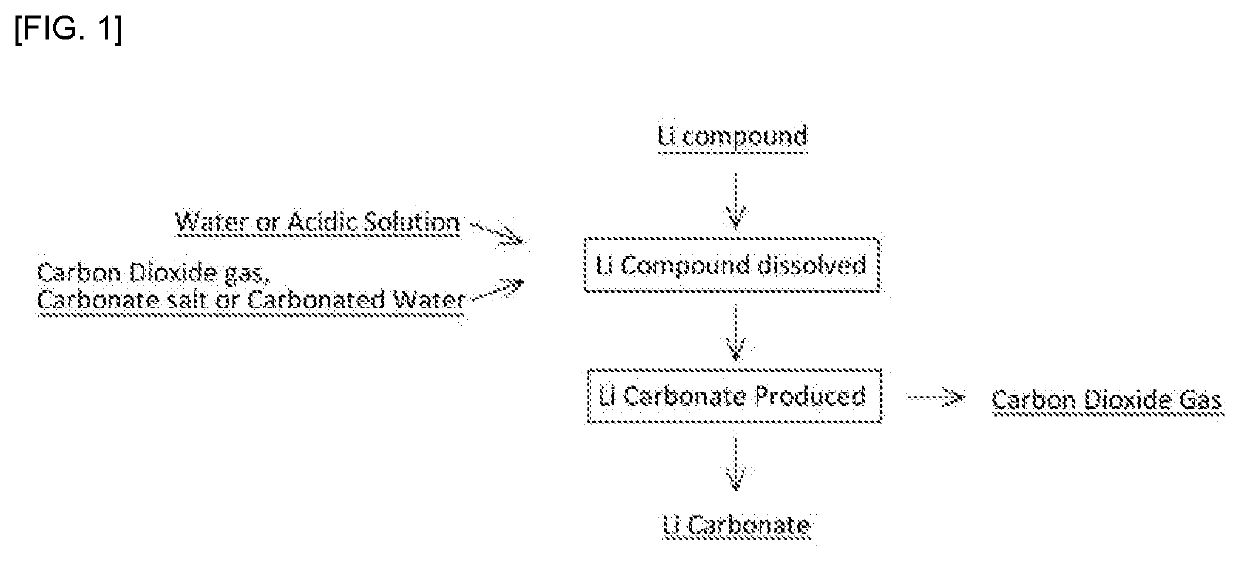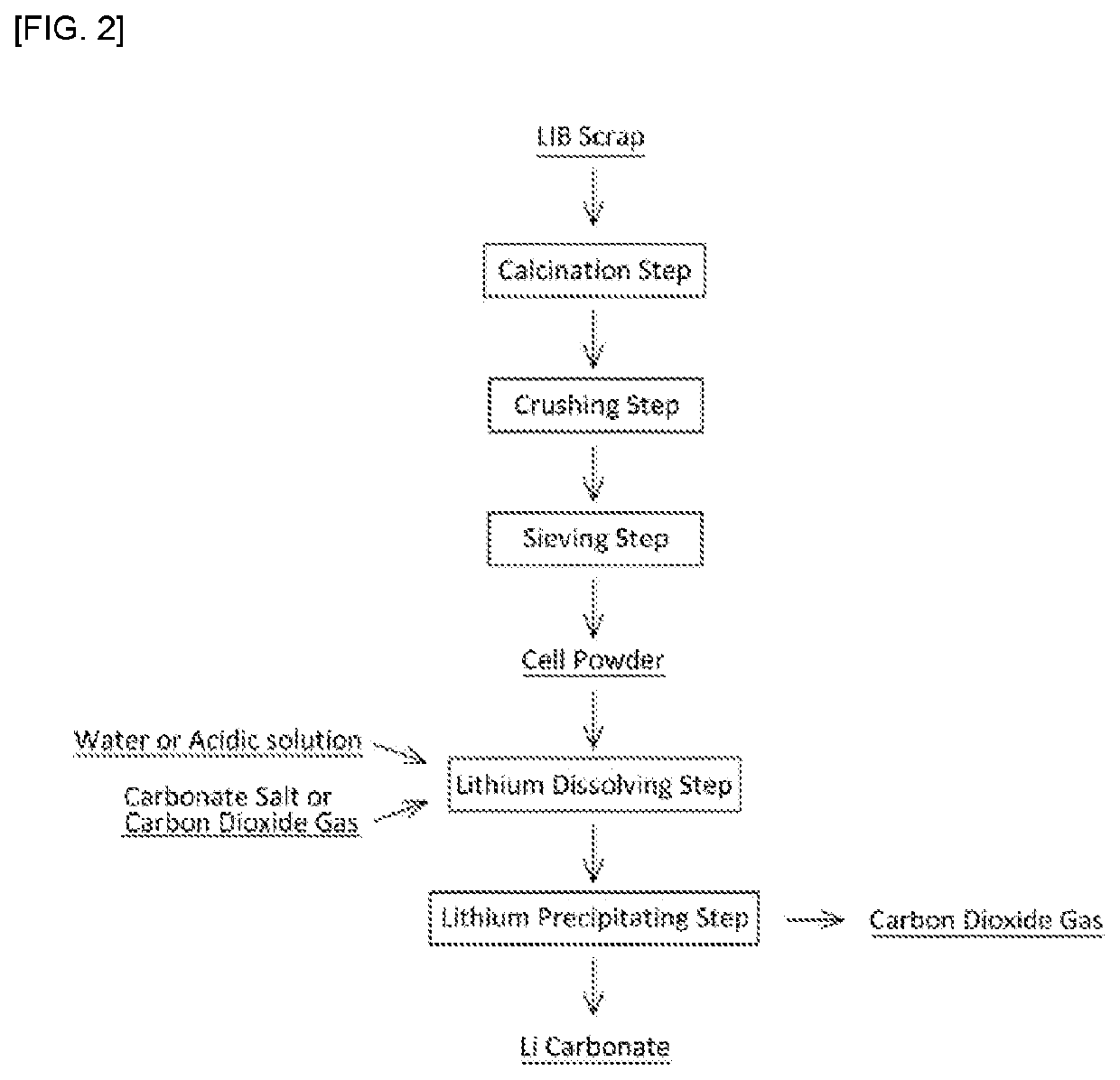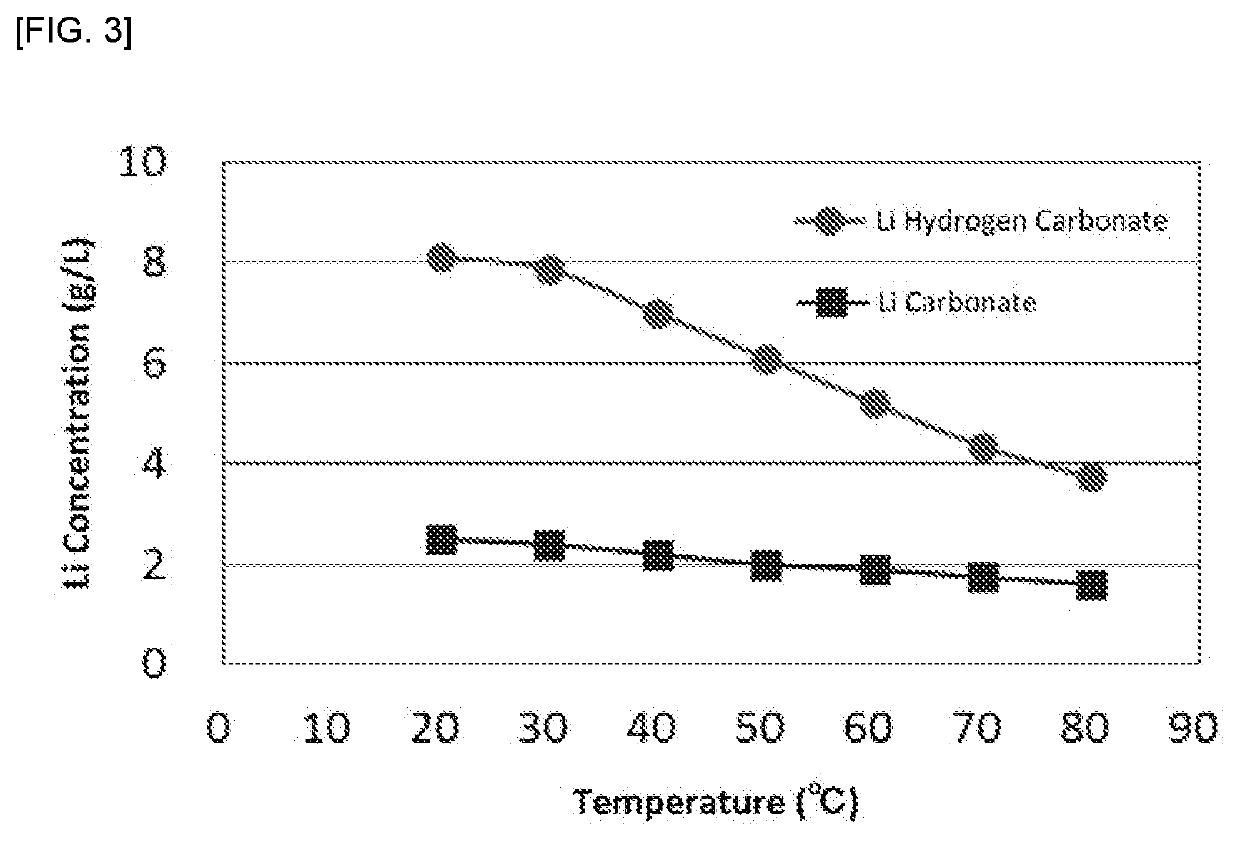Method for dissolving lithium compound, method for manufacturing lithium carbonate, and method for recovering lithium from lithium ion secondary cell scrap
- Summary
- Abstract
- Description
- Claims
- Application Information
AI Technical Summary
Benefits of technology
Problems solved by technology
Method used
Image
Examples
example 1
r Dissolving Lithium Compound
Test Example 1
[0114]Reagent grade lithium carbonate having a dry mass of 30 g was added to 300 mL of pure water to form a slurry. The slurry was heated at each of temperatures of 20° C., 30° C., 40° C., 50° C., 60° C., 70° C., and 80° C. Once each temperature was reached, a large excess of carbon dioxide gas was blown for the assumed reaction formula: Li2CO3+H2CO3→2LiHoCO3. After blowing the carbon dioxide gas, the slurry was subjected to solid-liquid separation, and an amount of a filtrate and a lithium concentration in the solution were measured. Results are shown in Table 1 and FIG. 2. Further, the same test was conducted with the exception that no carbon dioxide gas was blown, and a lithium concentration was measured. Results are also plotted in FIG. 2 as “Li Carbonate”. Here, the lithium concentration was measured by performing quantitative analysis for the filtrate by means of high frequency inductively coupled plasma atomic emission spectroscopy (...
example 2
r Recovering Lithium from Lithium Ion Secondary Cell Scrap
PUM
| Property | Measurement | Unit |
|---|---|---|
| Temperature | aaaaa | aaaaa |
| Temperature | aaaaa | aaaaa |
| Temperature | aaaaa | aaaaa |
Abstract
Description
Claims
Application Information
 Login to view more
Login to view more - R&D Engineer
- R&D Manager
- IP Professional
- Industry Leading Data Capabilities
- Powerful AI technology
- Patent DNA Extraction
Browse by: Latest US Patents, China's latest patents, Technical Efficacy Thesaurus, Application Domain, Technology Topic.
© 2024 PatSnap. All rights reserved.Legal|Privacy policy|Modern Slavery Act Transparency Statement|Sitemap



